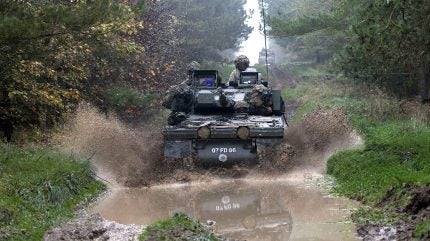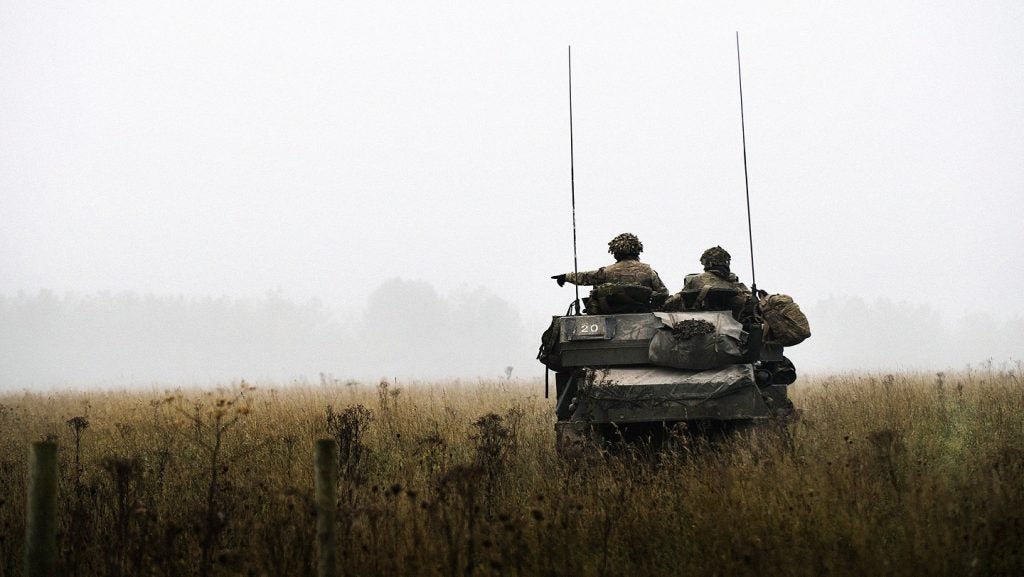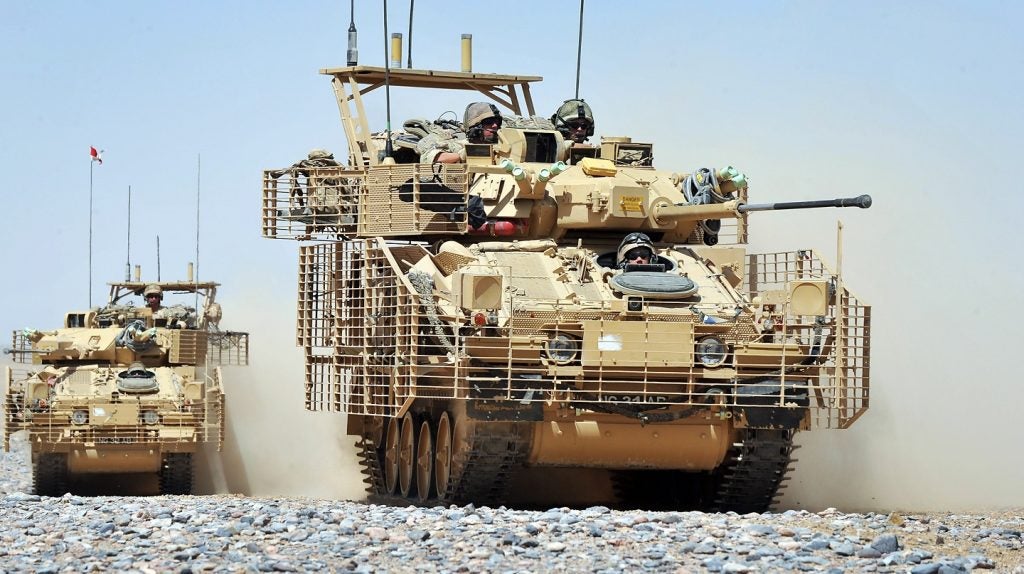
British Army’s Scimitar Light Tank: Ukraine Donations Offer New Lease of Life
The remaining fleet of FV107 Scimitar light tanks, formerly in service with the British Army, is currently awaiting its fate in the UK Ministry of Defence’s (MoD) disposal process as part of its decision to retire the entire fleet of Combat Vehicle Reconnaissance (Tracked) platforms from active service in 2023.
New figures provided by the UK Government on 10 May reveal all 114 vehicles that the British Army’s CVR(T) are awaiting disposal after being withdrawn from service. Of these, 97 are of the Scimitar light tank variant, marking the end of the road for the platform in UK service.

Discover B2B Marketing That Performs
Combine business intelligence and editorial excellence to reach engaged professionals across 36 leading media platforms.
However, with confirmation that a number of FV107s have been included in the UK’s latest military assistance package for Ukraine, the ability of the Scimitars to operate as on contemporary battlefields looks set to persist for some time to come.
Since being removed from service in 2023, the Scimitars’ disposal has been managed by the UK Defence Equipment Sales Agency. As of the most recently available information, updated in December 2023, as of March 2023 one FV107 had been disposed of and 18 sold externally.

At that time none had been donated to Ukraine, with the early May 2024 announcement that the FV107 Scimitar was to be part of a new £500m ($626.5m) UK security assistance package the first time the platform was being donated to aid Kyiv’s war effort. The exact number of Scimitars heading to Ukraine was not disclosed.
In a series of information releases by the UK Government on 7 May, it was disclosed that of the 400 vehicles being provided to Kyiv as part of the package, some 162 armoured vehicles of “further AS90 155mm artillery guns and Combat Vehicle Reconnaissance (Tracked), and 78 all-terrain vehicles made up of Bv-206 and Viking”.

US Tariffs are shifting - will you react or anticipate?
Don’t let policy changes catch you off guard. Stay proactive with real-time data and expert analysis.
By GlobalDataAble to operate in day or night conditions, the Scimitar weighs in at a little over 12 tonnes, making it air mobile and able to be carried by C-130J transporters or other such aircraft. The upcoming use by Ukraine will offer its forces a fast, tracked, scout vehicle, potentially used in support of tactical-level operations.
Scimitar light tank: 170 to 0 in a year
As recently as November 2022 there were 170 CVR(T) Scimitar tank in British Army service, a significant capability that was axed the following year as part of the ‘Future Soldier’ aspirations, which was intended to deliver a ‘modernised division capable of conducting high-end warfighting formed around the Armoured Brigade Combat Team’, the UK Government said at the time.
The first CVR(T) prototype was delivered to the UK MoD in 1969, with the British Army accepting the CVR(T) family of vehicles and awarding a production contract in 1970. The UK MoD received a total of 1,863 vehicles by 1986 and more than 3,500 vehicles were delivered to global customers by 1996.
BAE Systems delivered a life extension programme to extend the life of the CVR(T) vehicles operated by the Royal Army of Oman in 2002.
Upgrading the Scimitar to Mk 2 standard
In the 2000s, the British Army sought to upgrade more than 100 FV107s to the Scimitar Mk 2 standard, providing increased firepower and survivability. The first upgraded Scimitar Mk2 vehicles were delivered as part of an urgent operational requirement programme to the British Army, for deployment in Afghanistan, in September 2011.
The modernised Scimitar Mk 2 incorporated an aluminium hull design based on Spartan armoured personnel carrier’s hull, providing additional headroom for the driver and allowing for the integration of blast attenuation seating.

Additional upgrades to the Mk 2 standard included communication systems, electrical system, clutch, winch, braking system, light weight torsion bar suspension system with damper units, air conditioning system, and redesigned fuel tanks with increased capacity. The Scimitar Mk2 was also equipped with Cook Defence Systems’ DST 414 metal tracks and improved road wheels.
An enhanced radio power management system, consisting of a rotary-based joint and up-rated alternator, was also fitted to provide power solutions between chassis and turret.
The main armament consisted of a turret-mounted 30mm L21 Rarden cannon and a coaxially mounted 7.62mm general purpose machine gun. Either side of the turret are also four 66mm smoke grenade dischargers.





